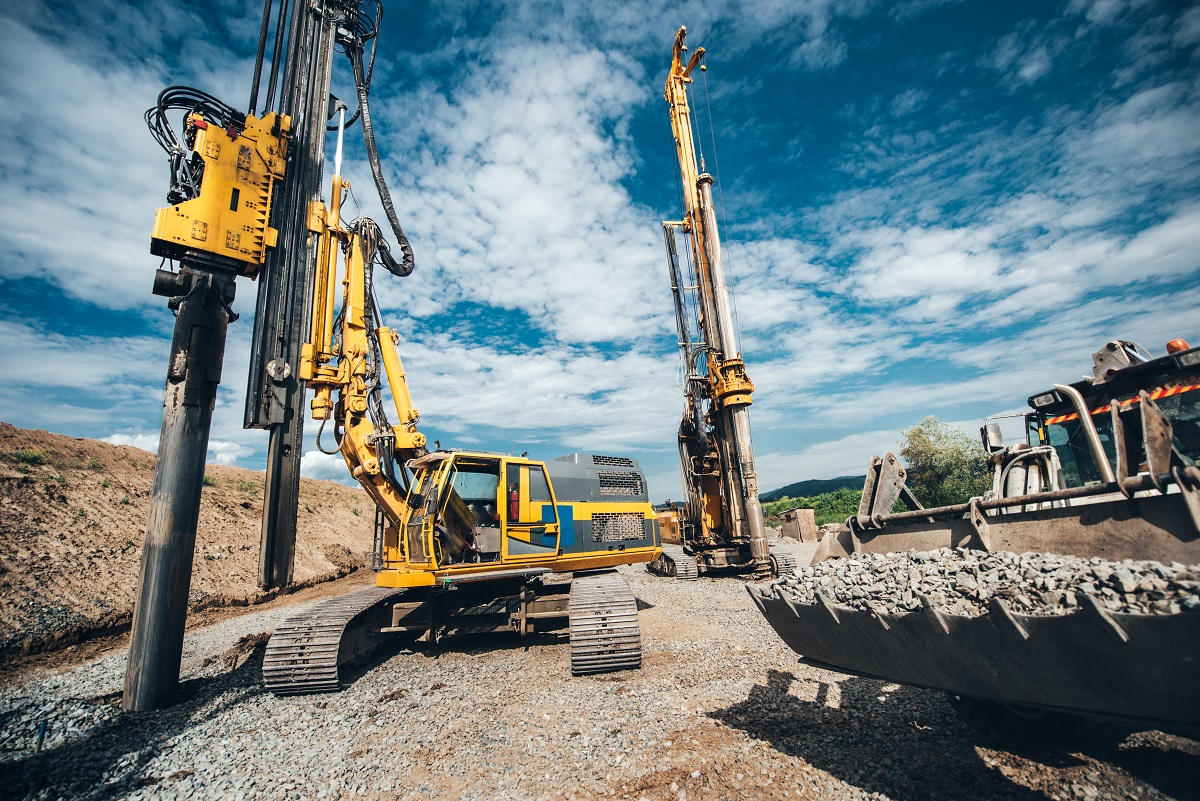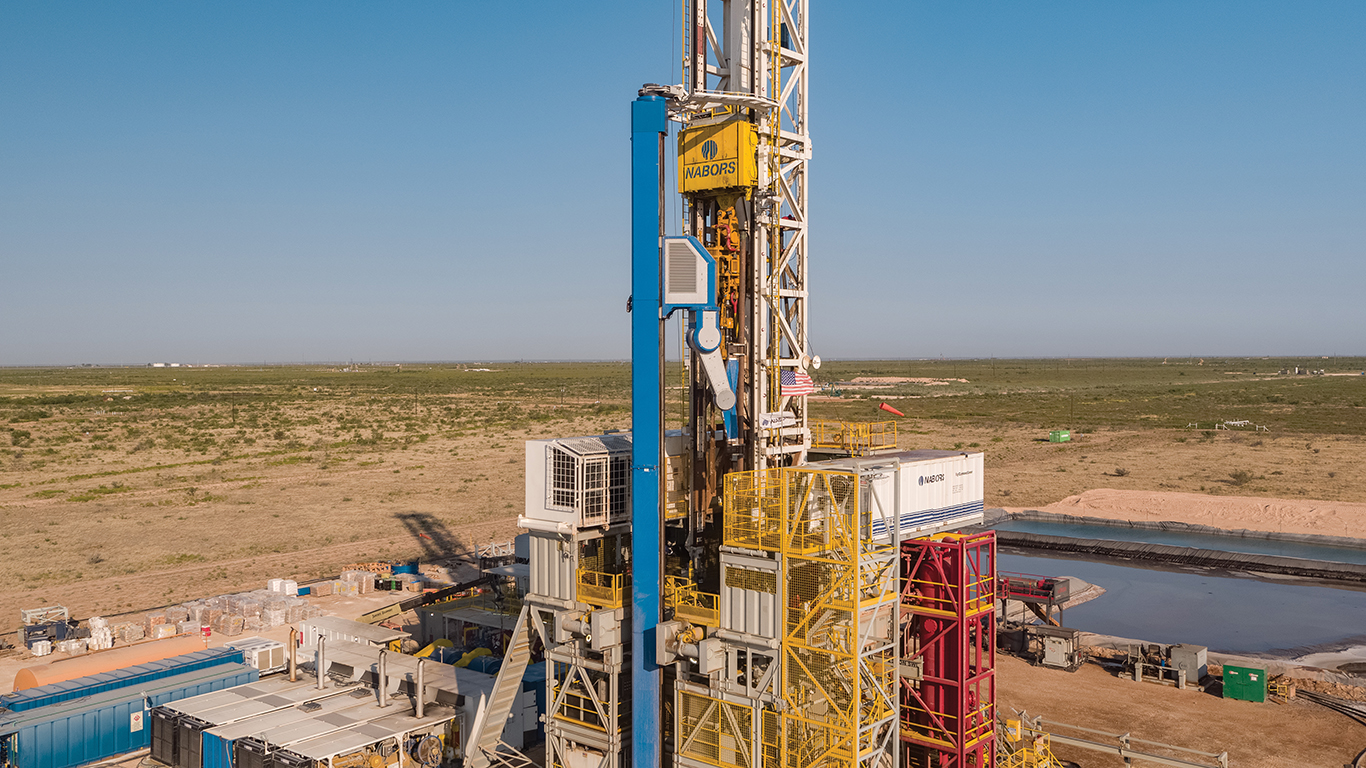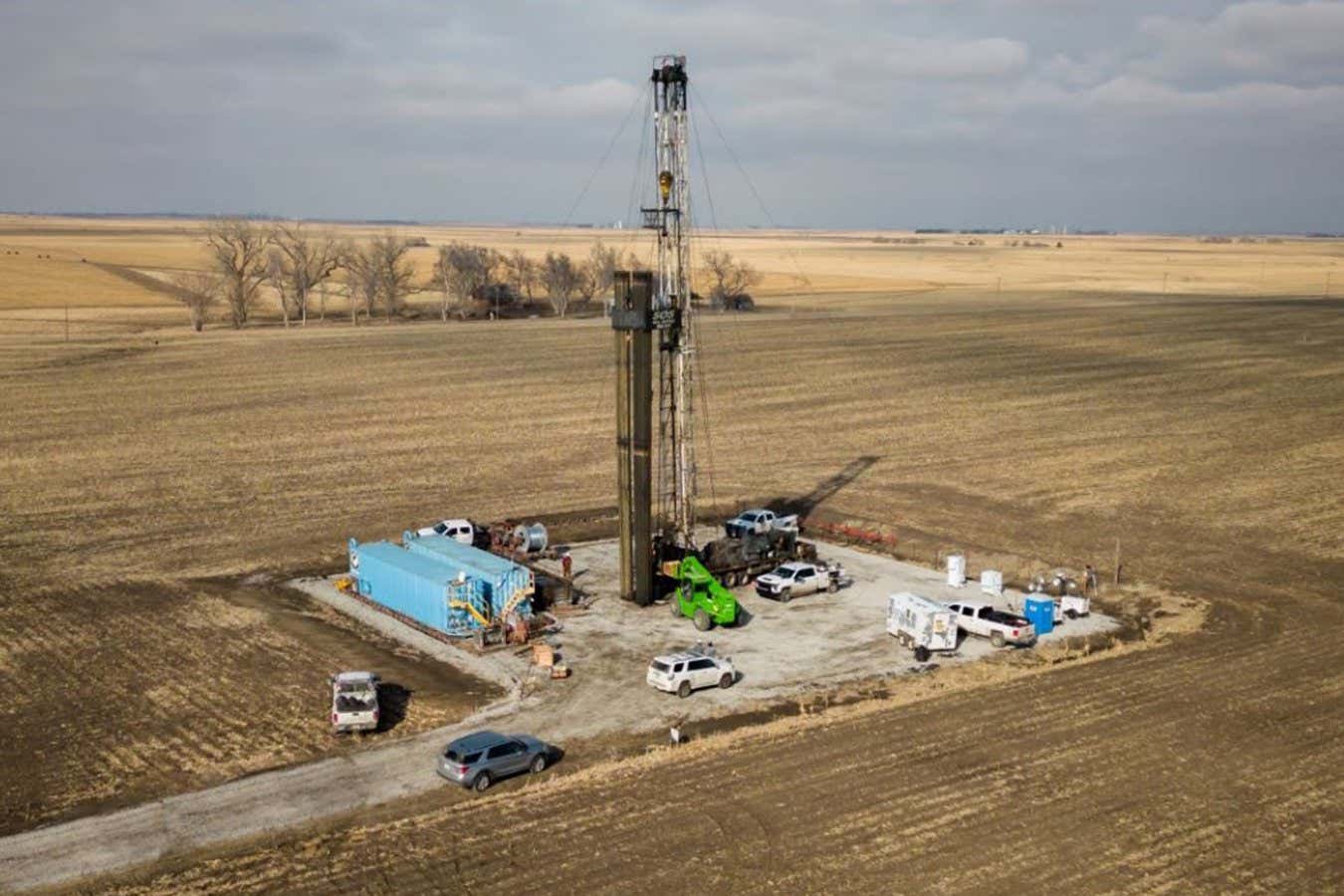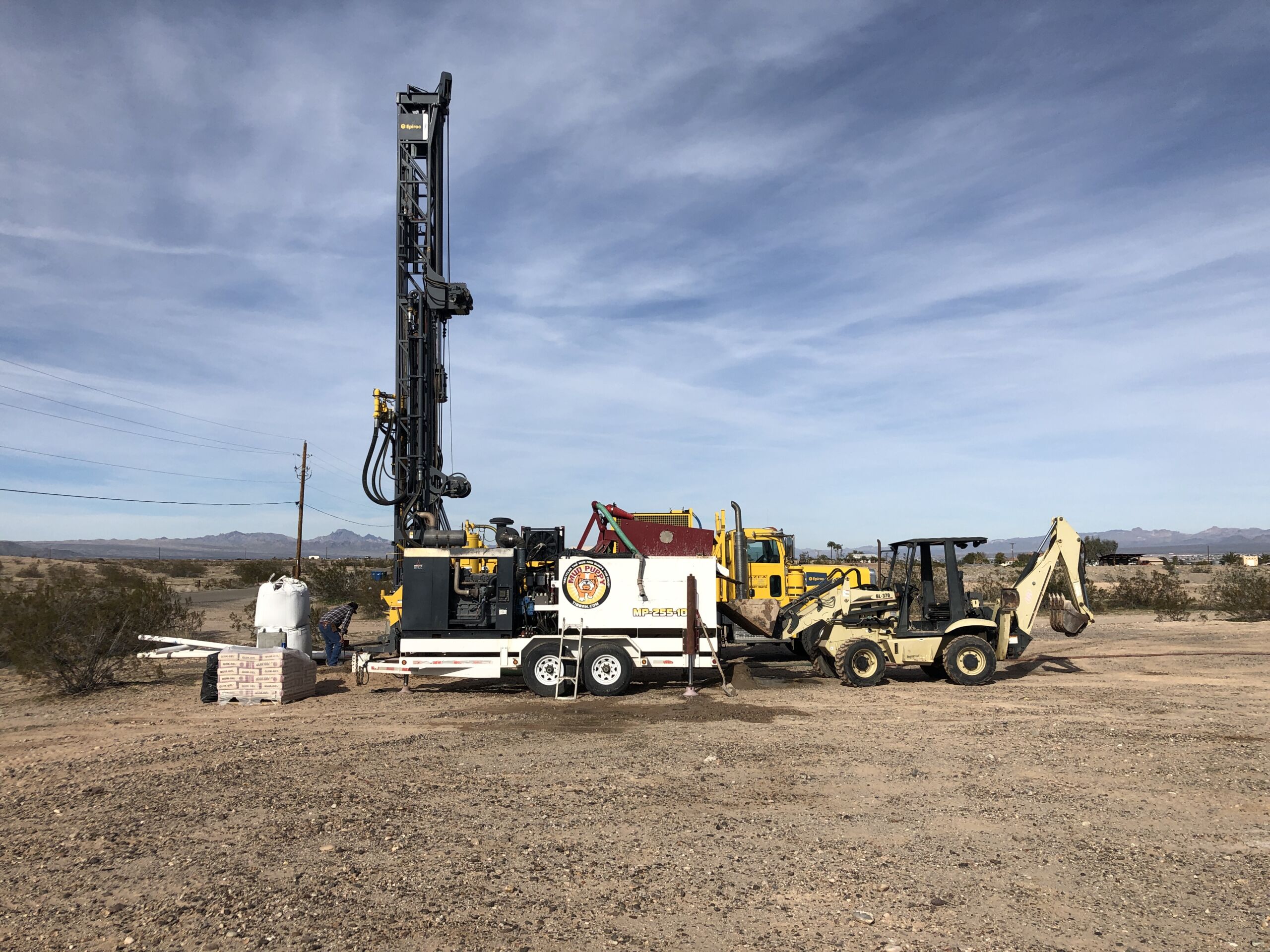
The phrase drilling programsrefers to an essential step in geology, building, and resource gathering. It is a well-planned series of actions meant to get helpful information, supplies, or energy from below the top of the Earth. Drilling programs are the way to get to the underground world, whether it's to learn more about the Earth's geological makeup, get energy resources like oil and natural gas, or help build essential structures.
In this article, we go through the complexity of drilling programs, looking at what they are, how they work, and how they affect different businesses. From how drilling tools have changed over time to how important it is to protect the environment, we will look at how drilling projects have changed over time and how they have shaped our present and future.
What Is Drilling?
When working with solid materials, drilling is a cutting procedure that involves using a drill bit to create a hole that has a circular cross-section. The drill is often a cutting instrument that rotates and is frequently multi-point.
While the bit is being turned at rates ranging from hundreds to thousands of revolutions per minute, the workpiece is being forced against it. As a consequence of this, the cutting edge is forced against the workpiece, which clears the hole being drilled of chips.
Even though the bit is often spun throughout the drilling process, the hole in the rock is typically not produced using a circular cutting action. Instead, the hole is often created by rapidly pounding a drill bit into the hole with a series of small strokes that are repeated frequently.
You have the option of performing the hammering impact from the surface of the hole using a top hammer drill bit or from within the borehole using a downhole drill bit (DTH). Drifter drills are the names given to the types of drills that are used for horizontal drilling.
Types Of Drilling Systems
Here are some of the types of drilling systems:
Rotary Drilling
In addition to creating a profound observation borehole, rotary drilling is utilized to extract representative rock samples. There are a number of rotary drilling choices available, such as augurs, drilling buckets, and core barrels, to mention a few, depending on the location of the task and the type of material you must drill through.
The torque and the quantity of feasible downward force are the most significant characteristics that distinguish each rotary choice when compared to others. Although there are other aspects to consider, such as power and substrate material, torque and downward force will be the ones that affect the work the most.
Hydraulic And Mechanical Drilling
For a long time, mechanical systems have been widely used because they are easier to maintain and repair while still giving sufficient power to the rotary system. In other words, the power is generated by a fixed mechanical system that is fastened to the driving shaft.
But hydraulic systems are also becoming more and more common; this is mainly because they can provide a similar amount of power with more height flexibility. The rotary tool may go up and down the drive shaft, allowing it to travel beyond the distance between the rotary table and the mechanical drive.
Oscillator And Rotator Systems
The oscillator/rotator system is among the priciest hydraulic systems. With this arrangement, a solid pipe casing revolves around the drilling bucket as the excavation is being done. This applies downward pressure as the rotary table operates.
Placing the rotary drill on top of the casing is another way to set up a rotary drill. The reverse circulation drilling method used by these casing-mounted drive systems involves the multiple rotating heads chipping away at the earth while an airlift removes the leftover material.
These kinds of setups need careful consideration of both the location's layout and the drilling design because of the enormous force being applied in two directions simultaneously.
Manual Excavation And Drilling
It may surprise you to learn that many contractors still employ manual excavation techniques in spite of the availability of modern, very efficient drilling technologies.
In some instances, such as rebuilding or strengthening an existing structure's foundation, manual excavation may be more efficient and less expensive. Additionally, there may occasionally be a geological need for human excavation, such as when removing a large boulder or drilling through it.
It's crucial to remember that there are significant safety precautions that need to be taken anytime personnel are positioned below the surface for this sort of activity. Depending on how big the drilling is, you might need to ventilate the space with fresh air, reroute any groundwater beneath the workers, or strengthen the area to prevent collapse.
Finally, a word regarding drilling systems: depending on the project, a combination approach that includes mechanical and hydraulic drilling in addition to human excavation may be needed. For example, laborers operating a clam or hydro mill may be found below the soil's surface.
What Is A Drilling Program?
The engineering plan for the wellbore's drilling and completion is called the drilling program. Numerous pieces of information are included in the plan, including the well's trajectory, casing design, mud program, well control, drilling bit selection, geological data, estimates of the formation gradient, economics, and unique processes that must be followed while the well is being built.
Even though drilling protocols are meticulously designed, circumstances in the well may require modifications. A drilling program refers to the plan for drilling one or more wells utilizing one or more drilling installations within a particular region and time, as well as any associated labor or activity.
The Planning Phase Of Drilling Programs
An essential component of every drilling program is the planning stage. It entails choosing a suitable drilling location, establishing specific project objectives, and assigning the required funds and resources.
It also establishes the framework for the whole project. We'll examine each of these crucial elements in more detail in this section and recognize their importance in making drilling programs successful.
Project Objectives
The first stage in the planning process is to outline the project goals clearly. These goals act as the program's compass during the drilling process. Establishing specific goals is crucial, regardless of the project's purpose, such as exploring natural resources, evaluating geological conditions, or extracting minerals.
These goals have to be SMART—specific, measurable, attainable, relevant, and time-bound so that all project participants are aware of what has to be done.
For instance, the purpose of an environmental drilling program may be to clean up contaminated groundwater to comply with regulations. Still, the project target of an oil and gas drilling program would be to find new hydrocarbon reserves in a particular geological formation.
Site Selection
The process of selecting a site is crucial since the appropriate location is a significant factor in the success of drilling operations. To find possible drilling locations, geological surveys, geophysical investigations, and other evaluations are carried out. Site selection is heavily influenced by variables, including geology, topography, accessibility, and environmental concerns.
Geologists and engineers make sure that the site selection is in line with the project goals by thoroughly assessing the subsurface conditions. The intention is to reduce the risks that come with drilling, such as unforeseen environmental effects or geological difficulties. Before making a final choice, a number of possible locations may occasionally be taken into consideration.
Budgeting And Resource Allocation
Establishing a budget and allocating the required resources comes after the project objectives have been determined and the site has been chosen. Estimating the whole cost of the drilling program, including costs for supplies, labor, equipment, permits, and any unforeseen circumstances, is a crucial step in budgeting.
Sufficient financial planning is essential to prevent cost overruns that compromise the project's viability. Allocating resources entails figuring out how much labor, supplies, and machinery are required to execute drilling activities successfully.
This entails safeguarding drilling rigs, employing qualified staff, and making sure that all safety precautions are taken. Allocating resources properly guarantees that the project stays on course and is completed by the deadline. The foundation of each successful drilling operation is the planning stage.
Organizations may reduce risks, maximize efficiency, and move toward their goals by establishing clear project objectives, choosing the best drilling site, and efficiently budgeting and distributing resources. This stage is crucial to the success of any drilling program because it lays the foundation for the subsequent phases of drilling operations.
Executing The Drilling Program
One of the most critical stages of any exploration or construction project is drilling program execution. In this phase, drilling activities are really carried out in accordance with the carefully thought-out plans and goals that were set forth in previous stages.
A drilling program's ability to be carried out successfully depends on a number of variables, such as the equipment's mobilization and setup, the drilling methods used, and the ongoing quality control and monitoring procedures.
Setting up and mobilizing are the first stages of carrying out the drilling program. Transporting staff, supplies, and drilling equipment to the selected location is part of this step.
It is essential to make sure that every piece of equipment is operating at its best in order to avoid unforeseen setbacks and delays. The drilling rig is put up, support structures are positioned, and the drilling site is secured to provide stability and security. Sufficient planning and coordination in this stage greatly enhance the effectiveness of the drilling program as a whole.
Drilling operations are fundamental to carrying out a drilling program. The project's goals, the site's geology, and the resources at hand all affect the drilling techniques that are used. There are three standard drilling techniques: rotary drilling, percussive drilling, and diamond core drilling. Each has advantages and disadvantages of its own. The program's success is greatly dependent on the choice of the best drilling approach.
To get important information about subsurface conditions, core sample extraction and ongoing geological data monitoring are crucial during drilling. Geologists and engineers may make well-informed judgments and modify their strategies as needed with the aid of these samples and data.
Throughout the drilling program, there are continuous processes for quality assurance and monitoring. Real-time data analysis is essential to detect changes in subsurface conditions, spot any problems, and make sure the drilling is going according to plan.
Drilling crews can react quickly to unforeseen problems, including rigid rock formations or unexpected water flows, by continually monitoring and interpreting data. Quality control procedures must also be followed in order to preserve the integrity of core samples and guarantee that they correctly depict the underlying geology.
Common Drilling Program Challenges
Earthquake Uncertainty
Handling geological uncertainty is a frequent difficulty in drilling projects. It can be challenging to forecast the conditions and composition of the subsurface while drilling with any degree of accuracy since it can be complicated and unexpected. Unexpected variations in groundwater levels, cracks, or rock varieties can cause delays, raise expenses, and pose safety risks.
Ecological Adherence
Drilling program compliance with environmental rules is a continuous problem. Careful planning and compliance with regulations are necessary to strike a balance between resource exploitation and environmental conservation. Project delays and legal problems may result from noncompliance.
Budget Excess
It might be challenging to stay within your budget, mainly when unforeseen problems crop up. Cost overruns can put a burden on project budgets and cause completion delays. To handle this difficulty, precise cost prediction, backup plans, and ongoing financial oversight are crucial.
Cost Estimation In The Drilling Program
The final phase in planning is putting together an estimate of how much money the well will cost. The expense of a properly prepared well may need the same amount of engineering work as the design of the well itself.
Following the establishment of the technical components, it is necessary to calculate the anticipated amount of time needed to dig the well. When the anticipated times for drilling and completing the well are factored into the design of the well, the actual cost of the well may be calculated.
Elements Of Cost Calculation
The price of the well may be broken down into eight primary components, which are as follows.
- Getting ready- This figure takes into account the expense of the land, the access road, the foundation for the rig, and any other civil works.
- Services- The cost of services such as geology, geophysics, cementing, transportation, workshop, production testing, catering, sea bed surveys, and other similar services is included in this total.
- Materials- This accounts for the price of casing pipes, bits, the wellhead, cement additives, mud chemicals, POL (Petroleum OiI Lubricants), and any other consumable materials that are needed.
- "Regional and headquarters overheads" refers to the costs that were incurred at the regional and headquarters levels in relation to the drilling activity that was allocated for a particular well.
- Depreciation of rig equipment- Depreciation is calculated using the straight-line approach, and the cost is allocated to each well in proportion to the number of days the rig is used.
- Depreciation of drill pipes- This component of the cost is based on per-meter depreciation, which is worked up centrally for different depthwise areas and is based on the replacement cost of the pipes during the year before the current one.
Future Trends In Drilling Programs In The USA
Drilling projects in the United States of America are expected to be influenced by a number of intriguing themes, including environmental sustainability, technology improvements, regulatory compliance, and the evolution of energy sources. In the upcoming years, these changes are anticipated to have a significant impact on how drilling projects are organized, carried out, and assessed.
Advanced Drilling Technologies
Drilling programs should profit from technological advancements, including digital twinning, real-time data analytics, and automated drilling systems. The efficiency, precision, and safety of drilling will all be improved by this technology. Because automated drilling rigs require less human interaction to operate, labor costs may be decreased, and drilling precision can be increased.
Renewable Energy Exploration
Drilling programs in the USA will increasingly entail geotechnical drilling for the installation of foundations for wind turbines and solar panels as the focus on renewable energy sources, such as solar and wind, grows. The necessity to cut carbon emissions and environmental concerns are what are driving this transition toward renewable energy.
Carbon Capture And Storage (CCS)
Drilling projects will be essential to carbon capture and storage efforts in the battle against climate change. In order to mitigate the release of collected carbon dioxide into the atmosphere, this entails digging wells to inject the gas underground for long-term storage.
Environmental Responsibility
Drilling program design will continue to be significantly influenced by environmental laws. The need to minimize the effects of drilling operations on the environment through strategies like lower emissions, appropriate waste management, and habitat protection will become more and more critical.
Geothermal Energy Development
Geothermal resource exploration and drilling are set to become more popular as a sustainable and green energy source. Sophisticated drilling methods and enhanced geothermal systems (EGS) are critical for harvesting this plentiful, sustainable energy.
People Also Ask
What Significance Do Drilling Operations Have?
Drilling activities aid in the construction of the wellbore from the surface to the reservoir formation.
What Is The Importance Of Drilling In Geology?
Drilling is done to look for mineral occurrences or hints that might point to mineral deposits in the rocks.
What Is Drilling's Primary Objective?
The primary method for removing petroleum from subterranean rocks is drilling.
Conclusion
Drilling programs are essential to advancement because they allow us to access the wealth of information, materials, and energy hidden beneath the surface of the Earth. This article has shed light on the complex world of drilling programs, highlighting their critical role in a variety of sectors, from construction and geology to energy generation and environmental stewardship.
By comprehending the fundamental elements, obstacles, and tactics linked to drilling initiatives, we may gain knowledge of their revolutionary capacity. Future developments in sustainable practices and emerging technology will continue to influence these initiatives, guaranteeing their efficacy while reducing their adverse effects on the environment.



